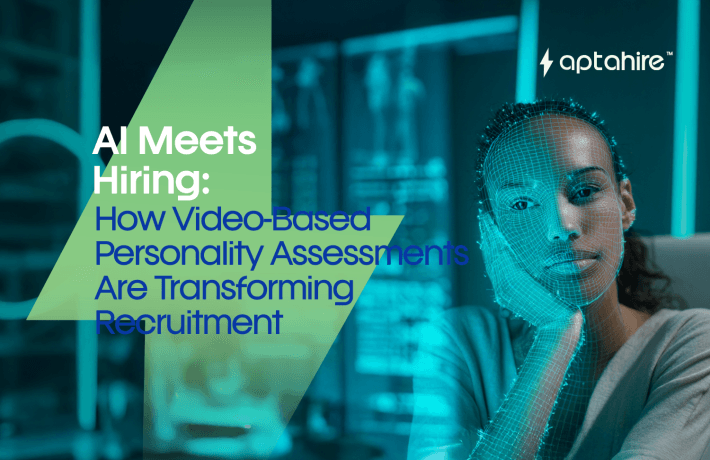The Science Behind Image Segmentation and Deep Learning for Background Analysis in Video Interviews

Virtual hiring is here to stay. As remote interviews become the standard across industries, companies are investing heavily in technologies that ensure authenticity, transparency, and fairness. Among the many AI-driven innovations reshaping digital recruitment, background analysis through image segmentation and deep learning stands out as one of the most critical.
But what exactly is background analysis in the context of video interviews, and how do technologies like image segmentation and deep learning play a role in it? Let’s dive into the science that makes it all possible.
What is Background Analysis in Video Interviews?
When conducting video interviews, especially at scale, recruiters face a pressing question: Is the candidate being truthful about their environment?
Background analysis allows AI systems to examine a candidate’s surroundings in real time to:
- Detect the use of virtual or blurred backgrounds.
- Identify unusual patterns suggesting green screen usage or deepfake overlays.
- Detect multiple faces in the frame.
- Recognize inconsistent lighting or movement that may indicate pre-recorded content.
This goes beyond aesthetics. It’s about ensuring that the person on screen is who they say they are and that they’re not relying on deception tools to manipulate the interview process.
The Role of Image Segmentation
Image segmentation is the computer vision process of dividing an image into segments to simplify or change its representation for easier analysis.
In simpler terms: it tells the system what part of the video is the person, and what part is their background.
Two Main Types of Segmentation in This Context:
- Semantic Segmentation:
- Labels each pixel in an image with a class (e.g., face, body, background).
- It helps distinguish the subject from everything else in the frame.
- Instance Segmentation:
- Similar to semantic, but it differentiates between multiple objects of the same class (e.g., multiple people in one frame).
- Critical for identifying if someone else is present or if there’s a suspicious duplicate feed.
Deep Learning Models for Segmentation:
Modern segmentation relies heavily on deep learning models such as:
- U-Net: Popular for biomedical image segmentation, U-Net excels in cases where precision is key, such as distinguishing between facial contours and background objects.
- Mask R-CNN: Combines object detection and segmentation, making it powerful for detecting multiple people or faces.
- DeepLabV3+: Known for high-resolution segmentation, useful in maintaining accuracy even when candidates have complex or cluttered backgrounds.
Deep Learning in Action: Training the Model
Deep learning models must be trained on large datasets to effectively learn the difference between natural and artificial elements in video feeds.
Key Steps:
- Data Collection:
- Thousands of annotated videos and images of real interviews.
- Include variations: lighting, backgrounds, clothing, face masks, etc.
- Preprocessing:
- Normalize data, resize images, augment scenes (simulate deepfake backgrounds, distortions).
- Model Training:
- Use CNNs (Convolutional Neural Networks) to learn pixel-level distinctions.
- Loss functions (like cross-entropy loss) help fine-tune predictions.
- Validation:
- Compare AI predictions with human-labeled ground truths.
- Improve accuracy using techniques like dropout and batch normalization.
The result? A model that can segment a live video feed in milliseconds and accurately flag background anomalies.
Real-World Applications in Hiring
Let’s look at some practical use cases where background analysis through deep learning has elevated hiring processes:
1. Detecting Virtual Backgrounds or Green Screens
A candidate using a virtual background might be trying to hide their location, distractions, or something else. AI models can now:
- Detect halo effects around the candidate (common with green screens).
- Identify inconsistent shadows or lighting.
- Flag suspiciously static or pixelated backgrounds.
Case Study: A fintech company in the U.S. noticed a rise in candidates applying from banned geographies. Deep learning-based background checks helped them identify 22 fake interviews in one hiring cycle alone.
2. Preventing Proxy Interviews
Image segmentation and instance recognition help ensure that the person in the interview is consistent across all frames.
- Detecting another individual in the frame.
- Identifying irregular transitions or replacements (suggesting a switch during the interview).
3. Identifying Pre-Recorded Submissions
Pre-recorded videos often feature subtle loops, no camera shakes, and perfect lighting throughout. Deep learning models can analyze temporal continuity and motion artifacts to flag such cases.
Ethical Considerations and Privacy
With great power comes great responsibility. Background analysis must be used transparently and ethically:
- Informed Consent: Candidates must know that their background will be analyzed.
- Data Security: All video data must be encrypted and stored securely.
- Bias Prevention: The model must be tested across diverse environments to avoid penalizing candidates for socioeconomic differences in home setups.
What the Future Holds
The future of AI-powered background analysis in hiring is exciting:
- Real-time Feedback: Candidates may receive prompts to adjust lighting or remove distracting elements before starting.
- Contextual Intelligence: AI may eventually suggest whether an interview setting seems respectful, professional, or optimal.
- Integration with Identity Verification Tools: Combining segmentation data with facial recognition and document verification.
Final Thoughts: Building Trust Through Technology
Background analysis through image segmentation and deep learning isn’t about catching candidates doing something wrong. It’s about creating a hiring environment built on trust, fairness, and consistency.
By using these tools, companies can ensure that all applicants are evaluated on an equal footing, regardless of where they are. In an increasingly remote world, that kind of trust isn’t just a luxury, it’s a necessity.
The science behind these technologies is intricate, but the goal is simple: to make virtual hiring as authentic and trustworthy as its in-person counterpart.
FAQs
1. What is image segmentation and why is it important in video interviews?
Image segmentation is a process in computer vision that divides an image into different segments or regions to simplify analysis. In video interviews, it helps distinguish between the candidate (foreground) and their surroundings (background), enabling AI systems to assess environmental authenticity, prevent spoofing, and detect suspicious behaviors like screen sharing or third-party presence.
2. How does deep learning enhance background analysis in virtual interviews?
Deep learning models, particularly convolutional neural networks (CNNs), are trained on large datasets to learn visual patterns. In background analysis, these models can detect anomalies such as pre-recorded videos, looped footage, green screen effects, or virtual backgrounds, all of which might indicate dishonesty or attempts to bypass the interview process.
3. Can AI detect virtual or blurred backgrounds in real-time interviews?
Yes. Advanced AI models use segmentation and motion analysis to detect inconsistencies between the candidate and their background. For instance, if a candidate’s head movement doesn’t match lighting shifts or shadows in the background, the system may flag the use of a virtual or manipulated backdrop.
4. Is background analysis invasive or a breach of privacy?
Not when implemented responsibly. Ethical AI systems conduct background analysis only during active interviews and focus solely on identifying integrity-related anomalies. Data is anonymized, encrypted, and used solely for evaluation purposes, with user consent obtained beforehand.
5. How accurate is image segmentation in identifying tampered backgrounds?
State-of-the-art segmentation models like U-Net, Mask R-CNN, and DeepLabV3+ achieve over 90% accuracy in separating foreground from background. When combined with anomaly detection and behavior tracking, the precision in identifying tampered setups increases significantly.
6. What are some real-world use cases of this technology in recruitment?
Several AI hiring platforms, such as Aptahire and HireVue, use background analysis to:
- Validate candidate presence.
- Detect use of multiple screens or assistance.
- Confirm that the interview environment is private and secure.
This ensures interview fairness, especially in high-stakes hiring.
7. How can companies implement background analysis without alienating candidates?
Transparency is key. Clearly communicate:
- What’s being monitored (e.g., environmental anomalies, not personal items).
- Why it’s being done (to ensure a fair process).
- How the data is used and protected.
Including these in consent forms and FAQs builds trust while maintaining the integrity of the interview.



